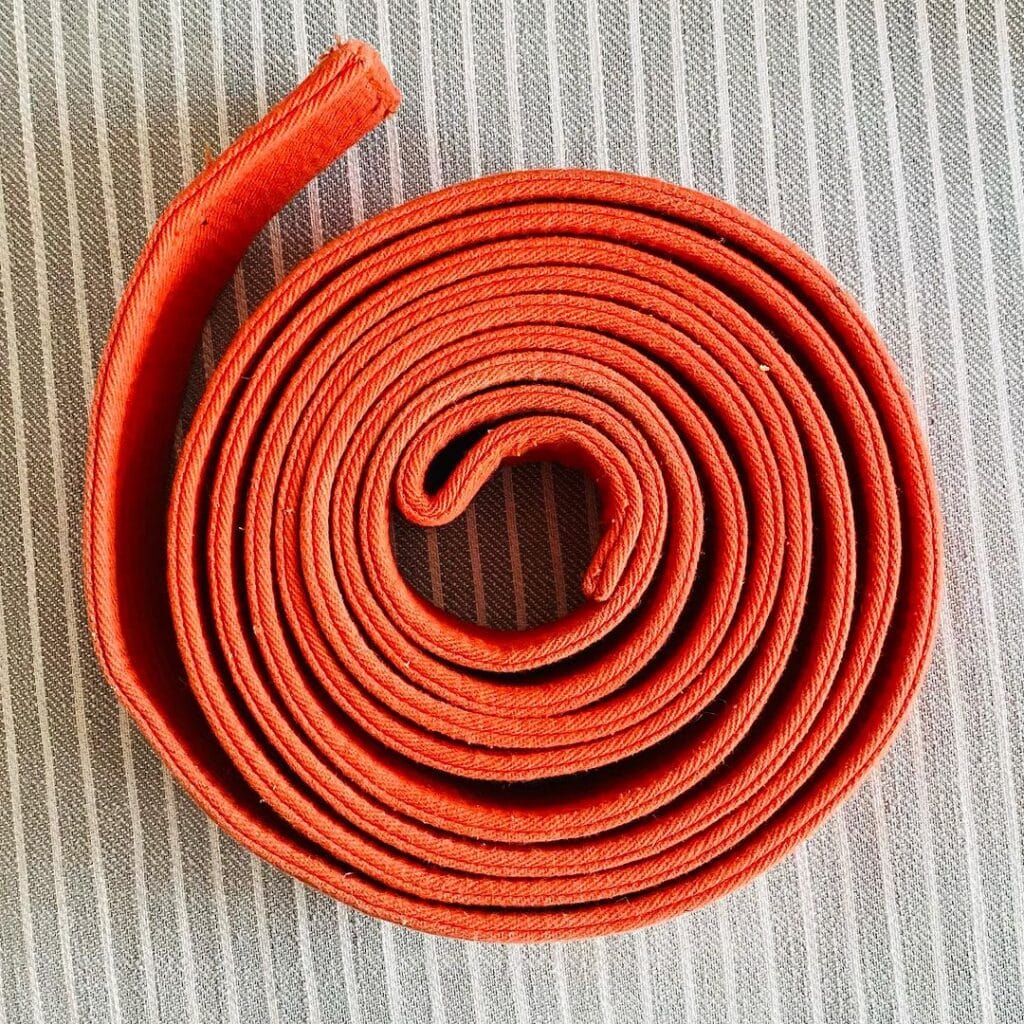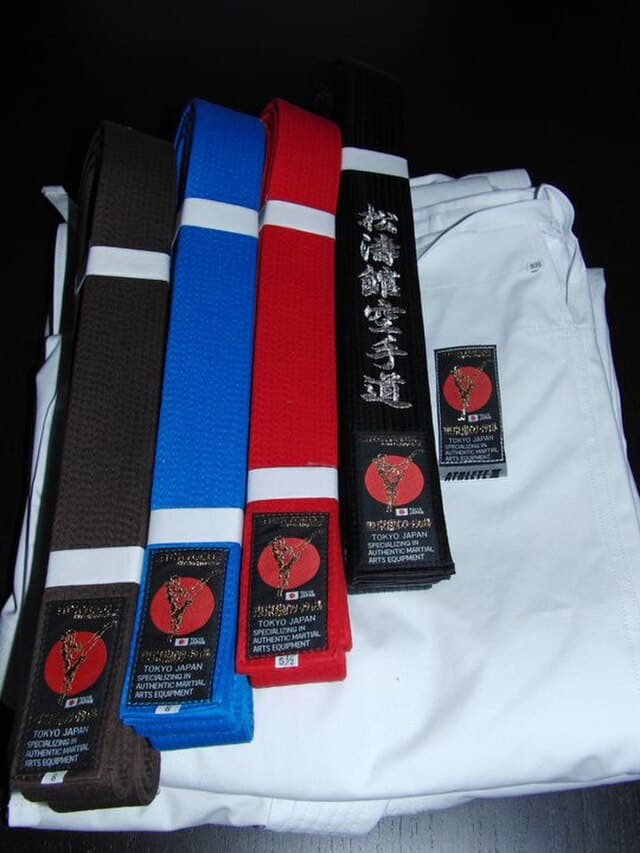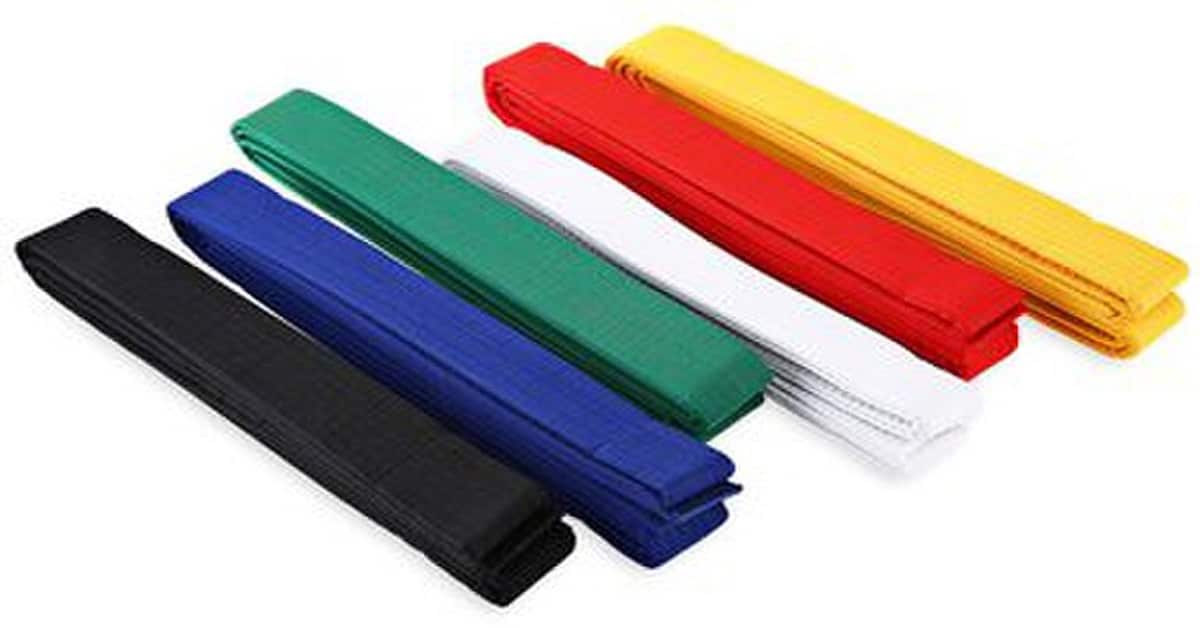Karate Belt Order Guide
When you ask someone about martial arts belt ranks, one of the first answers is Karate. However, not everyone knows all the details of the Karate belt order.
Here is a full guide for understanding the Karate belt order. Read below to learn about each rank and all of the ins and outs of this ranking system.

The History of the Karate Belt System
The idea for the Karate belt order was inspired by Jigoro Kano, the founder of Judo. Grandmaster Kano realized that he needed to create a ranking system to separate his students by skill.
Kano had a large influence on Karate and was good friends with one Karate’s founders, Grandmaster Gichin Funakoshi. Grandmaster Funakoshi took Kano’s belt system idea and created his own for Karate.
Funakoshi even adopted martial arts kimonos(Gis) as the official uniform of Karate. Adding a belt order into Karate helped organize and legitimize the martial art.
Master Funakoshi introduced the Karate belt system in 1924, which helped the martial art become globally practiced.
After the Karate belt order was introduced, every striking style that came after created their own belt system.
How Many Belts Are In The Karate Belt Order
(For this example, we are using the Karate belt system, which is recognized by the World Karate Federation(WKF). Read below to see examples of other types of Karate belt orders.)
Under the Karate belt order as recognized by the WKF 8 ranks.
- White Belt
- Yellow Belt
- Orange Belt
- Green Belt
- Blue Belt
- Purple Belt
- Red Belt
- Black Belt
The Meaning of Each Karate Belt
White belt
A white belt is the first rank within the Karate belt order. This rank symbolizes new light, which signifies that a student’s future is bright and full of potential.
Yellow Belt
The yellow belt rank signifies the yellow light of the sun. Now that you have begun your Karate journey, you are more open to learning new techniques.
Orange Belt
Next in the Karate belt order is the orange belt. The significance of the orange belt rank shows the spreading of light. A student is starting to grasp their potential and is spreading their light.

Green Belt
The Karate green belt signifies that the fundamentals a student learned in the previous ranks are taking root. Soon, the skills of the student will grown and spread into a full-blown tree.
Blue Belt
After the roots are planted at the green belt, a student moves up to the blue belt rank. This rank signifies the roots of your development, beginning to grow to the heavens with infinite potential.
Purple Belt
Much like in Brazilian Jiu-Jitsu, the purple belt in the Karate belt is right in the middle of the ranks. It signifies that a student is becoming a serious Karate practitioner.
Brown Belt
The brown belt rank signifies that the seed has grown into a full plant and is nearly ready for harvest. Brown belts are nearing the end of their journey, but need more work before becoming a black belt.
Red Belt
At red belt, a student has proven that they can give direction and teach the newer student’s basic techniques. In just a short amount of time, they will earn their black belt.
Black Belt
After years of ranking up through the Karate belt order, they arrive at the black belt level. At this rank, a Karate student has proven that they can demonstrate all of the fundamentals of the martial art.
How Long Does It Take To Go Through The Karate Belt Order
The average time to graduate through the ranks of the Karate belt order is around 5 years or more. This time frame could vary depending on a number of factors.
Anything from the amount of time dedicated to training or talent will have an effect when you earn a black belt.
The Karate Order: Black Belts
After the colored ranks in Karate, the most dedicated students will graduate through the Dan or black belt ranks. There are ten dan ranks that a Karate practitioner could potentially earn depending on their dedication.
- 1st Dan: Shodan
- 2nd Dan: Nidan
- 3rd Dan: Sandan
- 4th Dan: Yondan
- 5th Dan: Godan
- 6th Dan: Rokudan
- 7th Dan: Nanadan
- 8th Dan: Hachidan
- 9th Dan: Kyudan
- 10th Dan: Judan
Time requirements for the Dans(black belts)
Earning a higher dan rank in Karate takes even longer than the previous dan rank. Here is an example of the time frame for each of the 10 dan ranks.
- 1st Dan: This is the first year as a black belt and you can’t rank up for another year.
- 2nd Dan: 1 year as a 1st degree dan.
- 3rd Dan: 2 years at the 2nd dan.(Must be 18 years or older to achieve this rank.)
- 4th Dan: 3 years at the 3rd dan rank.
- 5th Dan: 4 years at the 4th dan rank.
- 6th Dan: 5 years at the 5th dan rank.
- 7th Dan: 6 years at the 6th dan rank. (Must be over 50 years old.)
- 8th Dan: 7 years at the 7th dan rank.(Must be at least 60 years old. Also, upon approval of a WKF instructor committee.)
- 9th Dan: 8 years at the 8th dan rank. (Must be approved by a WKF instructor committee.)
- 10th Dan: 9 years at the 9th dan rank. (Must be approved by a WKF instructor committee
Is There More Than One Karate Belt Order
As previously mentioned, each Karate style has its own belt order different from the other. Here is an example of some of the different styles of Karate belt orders.
(Note: Like with the previous belt ranks listed, not all styles of Karate use the same belt ranks. These are just examples of what some of the most notable Karate federations use.

Shotokan Karate Belt Order
- White Belt
- Yellow Belt
- Orange Belt
- Green Belt
- Purple Belt
- Purple Belt w/ Black Stripe
- Brown Belt
- Brown Belt w/ Black Stripe
- Black Belt
Kyokyshin Karate Belt Order
- White Belt
- Orange Belt
- Orange Belt w/ Black Stripe
- Blue Belt
- Blue Belt w/ Black Stripe
- Yellow Belt
- Yellow Belt w/ Black Stripe
- Green Belt
- Green Belt w/ Black Stripe
- Brown Belt
- Brown Belt w. Black Stripe
- Black Belt
Chito-Ryu Karate Belt Order
- White Belt
- Yellow Belt
- Orange Belt w/ White Stripe
- Orange Belt
- Green Belt w/ White Stripe
- Green Belt
- Blue Belt w/ White Stripe
- Blue Belt
- Purple Belt w/ White Stripe
- Purple Belt
- Brown Belt w/ White Stripe
- Brown Belt
- Brown Belt w/ Black Stripe
- Black Belt
Karate Belt Order Belt Tests
Karate Students must pass belt tests to advance through the Karate belt order. These tests are designed to test a student’s knowledge and technical and physical abilities.
As a student progresses through the ranks, the tests become harder. The hardest belt test, of course, is the black belt test.
Students who are up for a black belt usually undergo a string of physical and mental tests all day. Once completed, they earn the right to be called a Karate black belt.
You can find a guide on how to tie a karate belt here.


